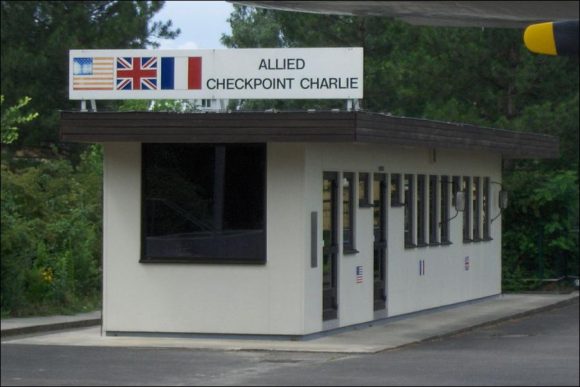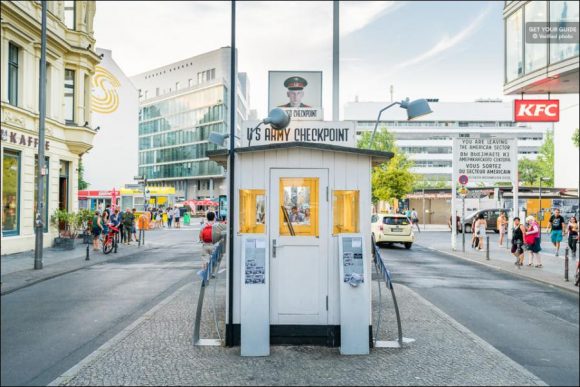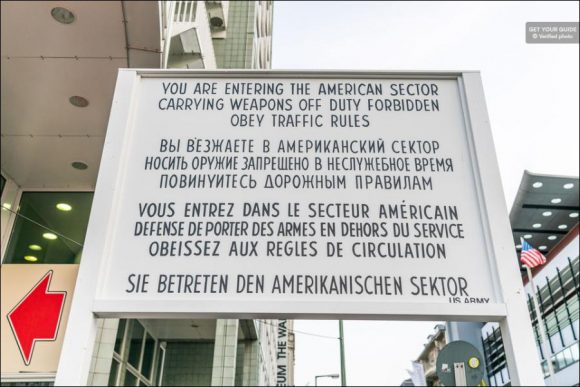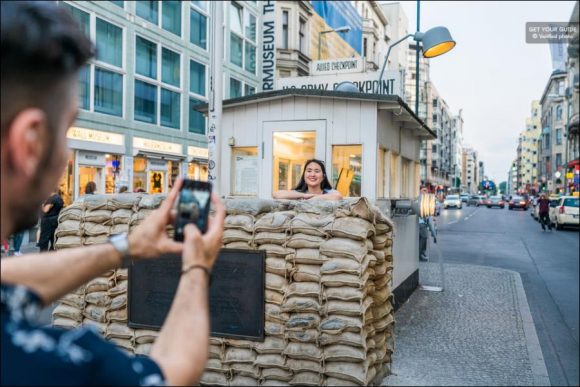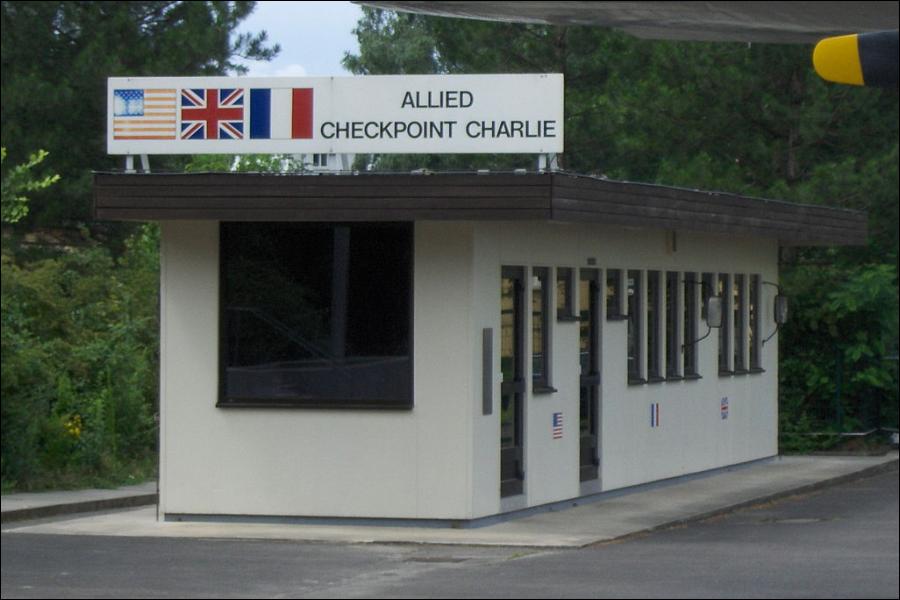Checkpoint Charlie (or “Checkpoint C”) was the name given by the Western Allies to the best-known Berlin Wall crossing point between East Berlin and West Berlin during the Cold War (1947–1991).
East German leader Walter Ulbricht agitated and maneuvered to get the Soviet Union’s permission to construct the Berlin Wall in 1961 to stop Eastern Bloc emigration and defection westward through the Soviet border system, preventing escape across the city sector border from communist East Berlin into West Berlin. Checkpoint Charlie became a symbol of the Cold War, representing the separation of East and West. Soviet and American tanks briefly faced each other at the location during the Berlin Crisis of 1961.
After the dissolution of the Eastern Bloc and the reunification of Germany, the building at Checkpoint Charlie became a tourist attraction. It is now located in the Allied Museum in the Dahlem neighborhood of Berlin.
Last exit before to pass Berlin Wall
Checkpoint Charlie was a crossing point in the Berlin Wall located at the junction of Friedrichstraße with Zimmerstraße and Mauerstraße (which for older historical reasons coincidentally means ‘Wall Street’). It is in the Friedrichstadt neighborhood. Checkpoint Charlie was designated as the single crossing point (on foot or by car) for foreigners and members of the Allied forces. (Members of the Allied forces were not allowed to use the other sector crossing point designated for use by foreigners, the Friedrichstraße railway station).
The name Charlie came from the letter C in the NATO phonetic alphabet; similarly for other Allied checkpoints on the Autobahn from the West: Checkpoint Alpha at Helmstedt and its counterpart Checkpoint Bravo at Dreilinden, Wannsee in the south-west corner of Berlin. The Soviets simply called it the Friedrichstraße Crossing Point (КПП Фридрихштрассе, KPP Fridrikhshtrasse). The East Germans referred officially to Checkpoint Charlie as the Grenzübergangsstelle (“Border Crossing Point”) Friedrich- / Zimmerstraße.
As the most visible Berlin Wall checkpoint, Checkpoint Charlie was featured in movies and books. A famous cafe and viewing place for Allied officials, armed forces and visitors alike, Cafe Adler (“Eagle Café”), is situated right on the checkpoint. It was an excellent viewing point to look into East Berlin while having something to eat and drink.
The checkpoint was curiously asymmetrical. During its 28-year active life, the infrastructure on the Eastern side was expanded to include not only the wall, watchtower and zig-zag barriers, but a multi-lane shed where cars and their occupants were checked. However, the Allied authority never erected any permanent buildings, and made do with the well-known wooden shed, which was replaced during the 1980s by a larger metal structure, now displayed at the Allied Museum in western Berlin. Their reason was that they did not consider the inner Berlin sector boundary an international border and did not treat it as such.
Today: Tourist and memorial site
Although the wall was opened in November 1989 and the checkpoint booth removed on 22 June 1990, the checkpoint remained an official crossing for foreigners and diplomats until German reunification during October 1990. Checkpoint Charlie has since become one of Berlin’s primary tourist attractions, where some original remnants of the border crossing blend with reconstructed parts, memorial and tourist facilities.
The guard house on the American side was removed in 1990; it is now on display in the open-air museum of the Allied Museum in Berlin-Zehlendorf. A copy of the guard house and the sign that once marked the border crossing was reconstructed later on roughly the same site. It resembles the first guard house erected during 1961, behind a sandbag barrier toward the border.
Over the years this had been replaced several times by guard houses of different sizes and layouts (see photographs). The one removed during 1990 was considerably larger than the first one and did not have sandbags. Tourists can have their photographs taken for a fee with actors dressed as allied military policemen standing in front of the guard house. Several souvenir stands with fake military items and stores proliferate as well.
The course of the former wall and border is now marked in the street with a line of cobblestones. An open-air exhibit was opened during the summer of 2006. Gallery walls along Friedrichstraße and Zimmerstraße give information about escape attempts, how the checkpoint was expanded, and its significance during the Cold War, in particular the confrontation of Soviet and American tanks in 1961. Also an overview of other important memorial sites and museums about the division of Germany and the wall is presented.
Developers demolished the East German checkpoint watchtower in 2000, to make way for offices and shops. The watchtower was the last surviving major original Checkpoint Charlie structure. The city tried to save the tower but failed, as it was not classified as a historic landmark. Yet, that development project was never realised. To this day, the area between Zimmerstraße and Mauerstraße/Schützenstraße (the East German side of the border crossing) remains vacant, providing space for a number of temporary tourist and memorial uses. New plans since 2017 for a hotel on the site stirred a professional and political debate about an appropriate development of the area. After the final listing of the site as a protected heritage area in 2018, plans were changed towards a more heritage-friendly approach.
Views: 381
